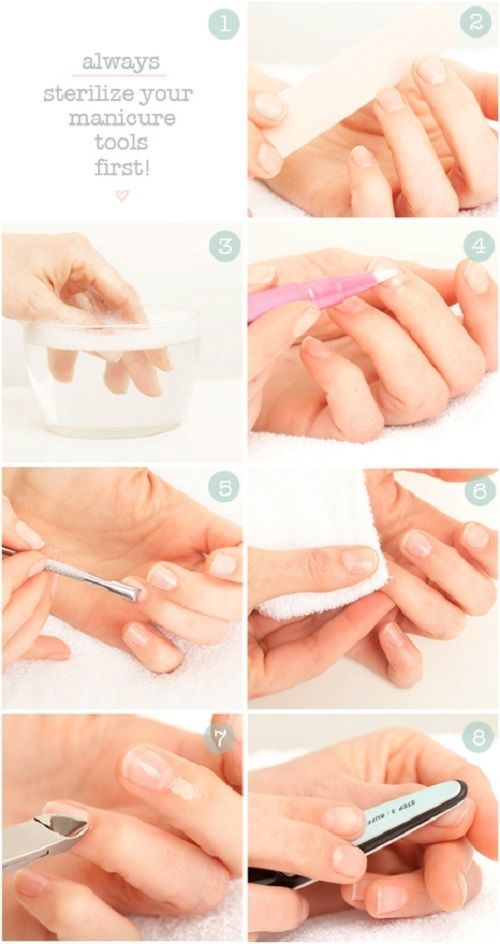Table of Content
- Apple Cider Vinegar
- Feet Need Some Love? Here's How to Do a Perfect Pedicure at Home
- This $24 Callus Remover Tool at Amazon is ‘Better Than a Nail Salon’
- How to tighten skin?
- Double Sided Callus Remover Foot File Pedicure Tool For Nail Art Tools And Equipment A-A4
- Pedicure Tools – Callus Remover / Files… – Pure Spa Direct
- Use a pumice stone
Foot soaks are a more therapeutic approach to softening stubborn calluses. The main ingredients in this foot soak are tea tree oil and soothing epsom salt. While foot soaks cannot remove calluses on their own, they can help to prep and soften feet for faster removal of calluses with a pumice stone, foot file or electric callus remover. Reviewers say they were impressed with this soak's pleasant scent and found it to be very relaxing. Apart from well-manicured cuticles and perfectly polished nails, we love that magical feeling of baby-soft soles after a salon pedicure. But when life gets busy and a salon pedicure inches lower on your to-do list, an at-home pampering session becomes all the more necessary.

A pumice stone can be especially handy when you have a callus on the bottom of your feet or on your elbows, where it’s hard to see. After soaking your callus thoroughly, apply the pressure of the pumice stone to your callus and rub in a circular motion. The idea is to rub the skin away over the course of a few applications of this remedy.
Apple Cider Vinegar
Wearing work gloves or knee pads might keep you from developing calluses from working with your hands or on your knees. Moisturizing your hands frequently can keep your skin soft and less prone to cracking and irritation. Callus pads, consisting of felt, silicone, and a gentle adhesive, can be applied to the affected area and worn underneath socks, shoes, gloves, or shirts.

Mix together a solution of four parts water and one part apple cider vinegar and soak your callus for about 20 minutes. When you remove your skin from this soak, you may be able to better peel a layer or two of the callus off. Breaking the skin around or on top of the callus can result in an infection.
Feet Need Some Love? Here's How to Do a Perfect Pedicure at Home
These pads will keep your callus from being irritated while it heals. The Mayo Clinic advises that you avoid medicated callus pads, which contain salicylic acid — an ingredient that can irritate and break through your skin. For feet that get very dry, keep an intensely hydrating cream on hand. This is especially helpful when your feet get beat up in beach sandals or dry out from chlorine and ocean water.

"When using this product you should not attempt walking, as your feet get really slippery inside these pouches and you can easily fall and hurt yourself," she says. Make sure you're ready to go with a straight nail clipper, nail file, foot file, cuticle pusher, cuticle nipper, foot mask, and cuticle oil. You can always leave your toes au natural, but if you prefer a fresh coat of paint, have your favorite nail polish on hand, too, plus a base and top coat. The acid content in apple cider vinegar can soften the hard skin of a callus.
This $24 Callus Remover Tool at Amazon is ‘Better Than a Nail Salon’
She has also written for WomensHealthMag.com, Elle.com and HealthCentral.com. Add a clear top coat to finish off your pedicure at home. Now use your cuticle cutters to remove the pushed back cuticles. A sociopath is someone who has antisocial personality disorder . Here are the symptoms, treatment options, and how to cope.
"Reapply your top coat every four days to keep your polish as long-lasting and shiny as possible," she suggests. Next, clip your toenails to your desired length, and then file them so the tips are nice and smooth. Hang this baby in your shower for a quick smoothing session before you hop out. This dual-sided scrubber has a gritty and a fine side for various levels of smoothing. Don’t ever use a razor or sharp utensil to try to cut them off your skin. This can break your skin and cause the area to become infected, especially if it’s still being compressed or irritated by the initial cause of the callus.
How to tighten skin?
If you've ever walked in a high heel or gone to the gym, there's a pretty solid chance you've encountered calluses on your feet and hands. And if that's the case, you're well aware that getting rid of them can take a fair amount of trial and error, or the help of a seasoned professional and a whole lot of scrubbing. So in order to save the trip to the pedicure bowl, we took matters into our own hands , to find out about a few pro-approved tools and tricks for removing calluses at home. To treat existing calluses, a pumice stone can clear some dead skin off without being harsh. Soak your feet or take a shower before gently swiping the callus with the stone.

Rinse off the paste and use a pumice stone to continue exfoliating. Sprinkle some salt and a few drops of lemon juice on a thick slice of onion. Apply the sea salt and olive oil mixture in circular motions for several minutes.
The fine grains of the baking soda and the fizzy action of adding it to the lemon juice might give this soak some extra callus-dissolving power. Tea tree oil is an antibacterial, antifungal, and natural antiseptic. Place a few drops of tea tree oil in a basin full of warm water, and soak your callus until you feel the skin begin to soften and lift.
By now you realize how easy it is to give yourself a salon-worthy pedicure at home, so stick to it! Remark suggests treating yourself to pedicures every two or three weeks for those with very active lifestyles to maintain proper foot health. "Otherwise every three to four weeks is sufficient, depending on how quickly your nails grow," she says. Apply the first layer of nail polish in a thin layer making small strokes from the nailbed to the tip of your nail.
The doctor will tell you how many times to replace the salicylic acid patch. The doctor may also recommend the use of pumice stone to smooth away dead skin. When a region of your skin is getting a lot of use and could be vulnerable to blisters, it develops a callus to protect itself. Removing that callus it only makes the skin to become thicker, harder and dryer. Pedicure for the foot or using a foot file will only damage it than make it good.
A simple warm-water soak is the first remedy recommended by the American Academy of Dermatology. This remedy involves combining an acid component and a chemical component to spark a reaction that makes calluses easier to remove. You’ll need warm water, a basin, and 2 to 3 tablespoons of lemon juice to start with. After a few minutes of soaking your callus in this solution, add in the baking soda.
A simple 30-minute baking soda soak may remove the top layer of dead skin, making the apple cider vinegar concoction that much more effective. Another great home remedy for removing calluses is apple cider vinegar. Not only does the acidic nature of apple cider vinegar help to soften hard, thick skin, but it is also anti-inflammatory and encourages the growth of new skin tissue to replace the old. Cuticle oil is key for healthy, strong nails, whether on hands or toes. "It refreshes your pedicure and prevents toes from looking dry," Remark says, so don't forget to swipe some over your toes. But remember to always apply cuticle oil after nail polish so that it won't interfere with the color adhering to nails.

Smooth down any callus using a scrub to remove any dry skin., then moisturize it thoroughly. Make the foot lotion a regular part of your daily routine. The enzyme papain, found in papaya, makes this tropical fruit an excellent home remedy to help soften and remove calluses. Papain helps old, dead skin to slough off and other nutrients in papaya nourish the growth of new skin tissue to replace it. When it's time to bring in the big guns, the old faithful, grater-style callus remover is your best friend.

No comments:
Post a Comment